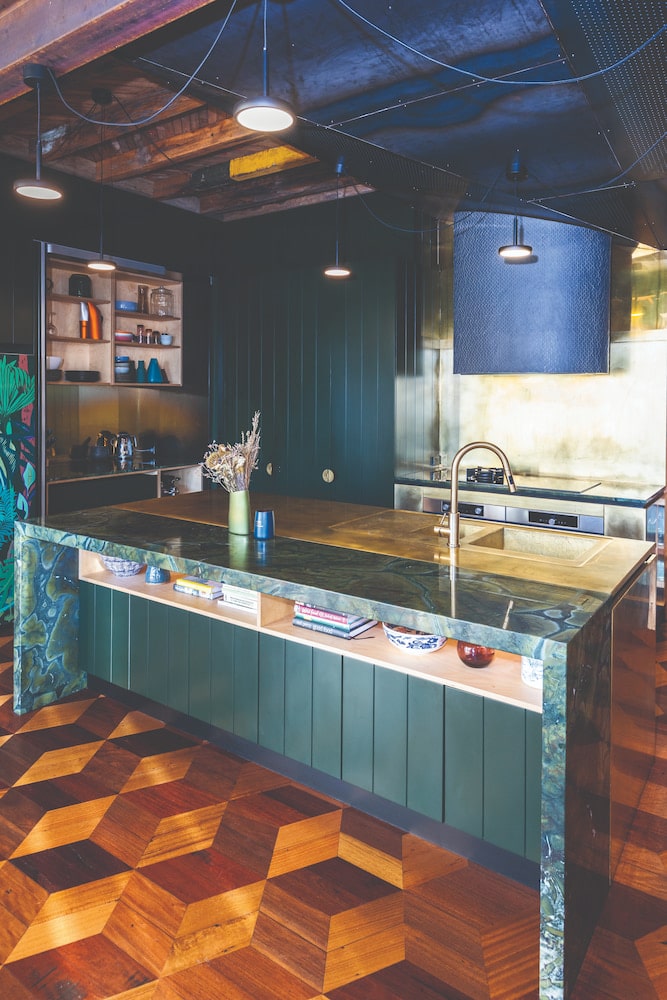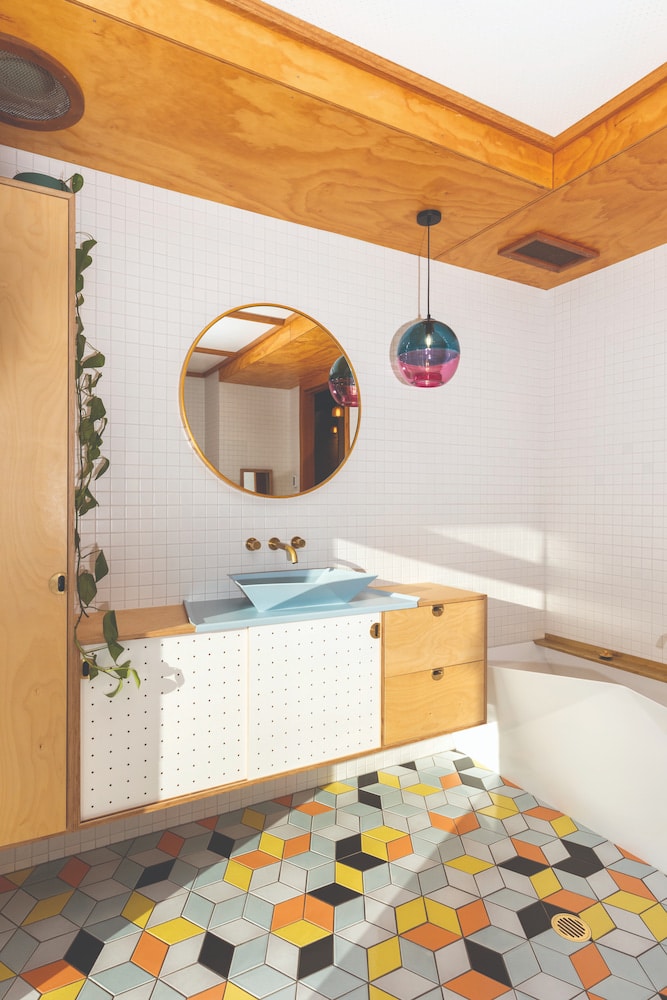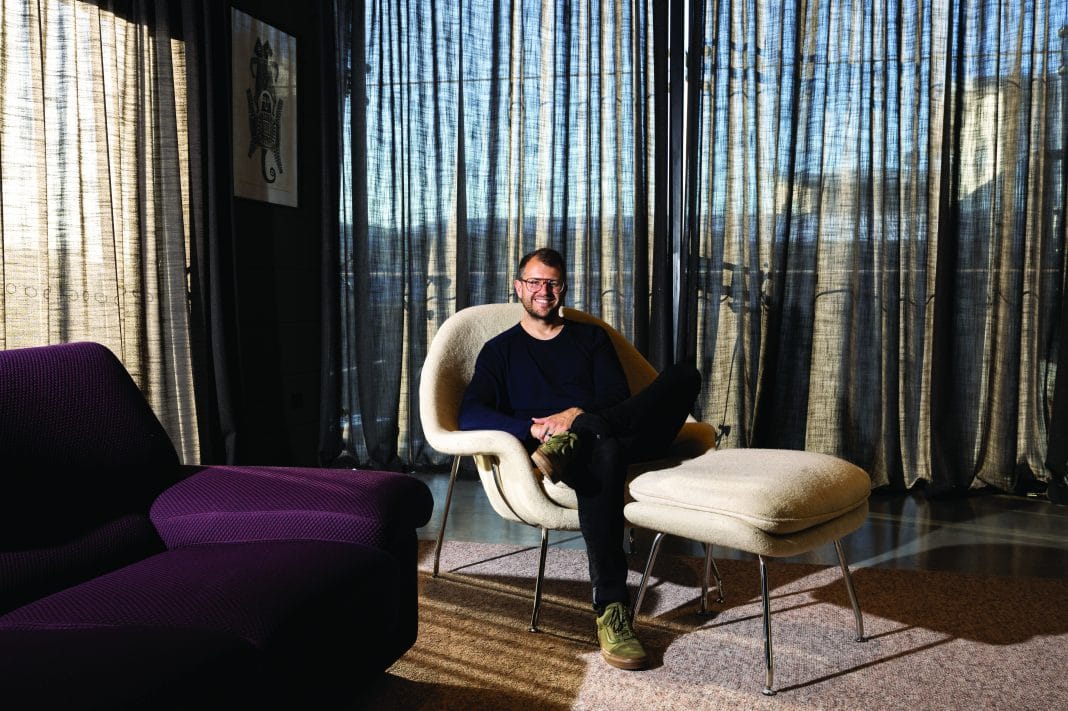Daniel Fitzpatrick, designer, builder, and owner of Crace House, took seven years to bring his vibrant vision to life, never rushing the details that would lead to unique success.
“It was challenging, designing for myself,” he smiled. “I turned out to be a pretty hard client.”
While inspired by deconstructivism, Crace House doesn’t subscribe to any one style, with an undeniably eclectic theme.

“I had to show some restraint, so that it didn’t become a hodgepodge.”
The exceptional detail of Crace House was developed naturally, framing the structural bones, which remain largely exposed. Timber, brass, and steel stand unpainted, and unpolished, letting the materials breathe.
“Sometimes you want polished,” Daniel said. “The house we had before was polished. The materials were beautiful, but fussy, glossy, and needed constant cleaning. When my wife and I moved, we knew we needed a house that, if damaged, can be fixed or left to show.
“Back then we lived in a showpiece. I thought I wanted it that way, but quickly learnt that when everything is shiny, even fingerprints stand out.” While their last home embraced minimalism, Crace House is full of colour, treasures, and knick-knacks from past travels.
Owner of award-winning construction company, Megaflora, Daniel insists that Crace House would be highly liveable for anybody.
“The materials aren’t precious. If the timber is scratched, it doesn’t really matter because it’s recycled. If the baby makes a dent, that just adds to the layers.”
Since he began building, Daniel has pursued the use of sustainable measures. He also advocates for the sustainability behind building things to last. “There’s a lot of energy involved in building a house. If its lifecycle is 30-40 years, that’s not sustainable. If the bones are true, you can purchase a house when it’s rundown and still invest in renovating it.”
Rather than dipping into new resources, Crace House features the storied beauty of raw materials that were salvaged by Daniel from demolition sites and past projects.
“Being in the building industry for almost 20 years, I saw so much wastage when old houses were knocked down. Perfectly good bricks, steel, and timber that didn’t even go to firewood, just straight into landfill.”
The timber of Crace House is entirely recycled. Where recycled materials weren’t utilised, they were sustainably sourced.
Daniel recounted his favourite “past life” of reclaimed goods. “The ceiling beams came from the Goulburn sheep saleyards. Some of the timber up there is 150 years old.” Chips of paint and sales lot patterns peek out of crevices. The floorboard above the beams was once the Phillip squash courts. Its “colourful accents” once tape that marked the court lines.

A cacophony of colours and textures, with warm timber subtly uniting the diverse elements, Crace House is every maximalist’s dream.
In recent years, we have seen Gen Z call out minimalism as “boring”. Daniel attributes this to the “rise of the maker,” a response to the digital age.
“Some people say we’re all going to be living in 3D printed houses in the future. There’s definitely a need for that, but I don’t think it’s true,” he said.
“There’s a level of empathy in knowing that something was created with a human touch. I think maximalism is a response to minimalism stripping everything back to the bare essentials and losing that empathy. There’s also a feeling of trying to ground ourselves in our belongings, a reminder that there’s more to life than ones and zeros.
“People don’t feel comfortable in sterility anymore.”
Daniel’s advice to first-time homeowners who want their mashup of treasures to work aesthetically, is to step back from trends.
“Invest in things because you like it. Have things that have some sense of meaning to you, and if they don’t match, there’s still a rationale for why you chose them.
“Authenticity is always a good start.”
Get all the latest Canberra news, sport, entertainment, lifestyle, competitions and more delivered straight to your inbox with the Canberra Daily Daily Newsletter. Sign up here.
For More:



